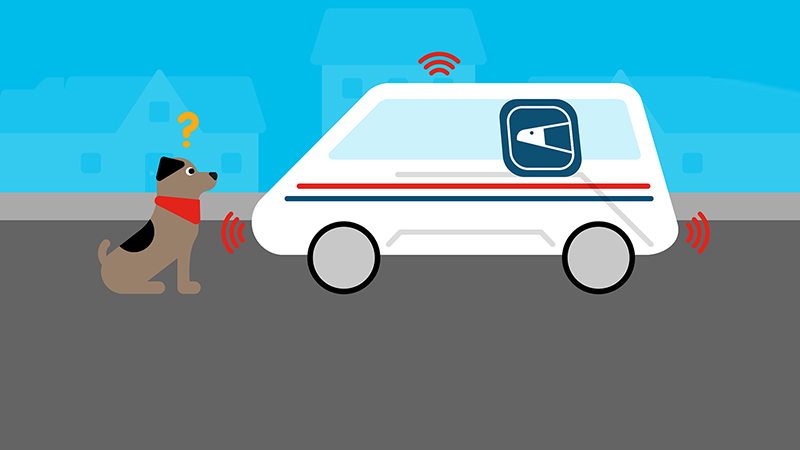Autonomous vehicles are gaining traction—now self-driving trucks may be delivering your mail. The U.S. Postal Service (USPS) announced plans to test a two-week long pilot program in late May for long-haul autonomous delivery trucks. This will take place between distribution centers in Phoenix and Dallas. The trucking industry is a relatively new area that digitization and the Internet of Things is transforming. McKinsey & Company states that 65 percent of the nation’s consumables are trucked to market, and estimates that full automation could save costs by 45 percent.
Amazon and other e-commerce outlets have shaped the trucking ecosystem since the inception of online shopping. Between 12 and 15 percent of all purchases in the United States are from online shopping, and five percent of Amazon’s purchases are same-day deliveries. With automation, the whole process of ordering to delivering goods has become quicker and simpler. Shippers and carriers use analytics to cut warehouse costs and optimize delivery routes.
See also: Cars in space and how tech can bring us to Mars
USPS is using self-driving truck company TuSimple’s vehicles for the deliveries, which includes a safety engineer and driver to accompany the trips. The pilot program will start relatively small, with five round trip drives, totaling 45 hours or 2,100 miles. TuSimple has been driving its 17 autonomous semi-trucks since August.
Autonomous trucks have several advantages over self-driving cars—delivery trucks are usually taking long-haul trips down highways, which eliminates a lot of need for complicated city navigation. Automating the process would also remove the need for human drivers’ rest times. The American Trucking Associations estimates a lack of 174,500 truck drivers by 2024, so autonomous trucks could help shippers and carriers with the possible driver shortage.
The future of autonomous vehicles in your city could be ramping up quickly. Cisco’s Lauren Horwitz writes that with the growth of smart cities, IoT devices and smart cars could make city life much more efficient. Autonomous vehicles are driving passengers, but they’re also delivering packages, navigating streets, and paying for tolls. With blockchain, self-driving cars bring a multitude of positive impact, including standardizing toll payments, parking without meters, renting cars with ease, and digitizing the insurance and car purchasing process. The inclusion of blockchain means the self-driving car now becomes an agent for transaction.
###
We welcome the re-use, republication, and distribution of "The Network" content. Please credit us with the following information: Used with the permission of http://thenetwork.cisco.com/.




